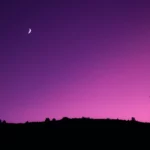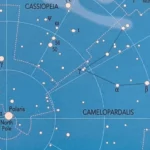Hey there, aurora enthusiasts! Imagine gazing upon a night sky ablaze with vibrant hues of green, pink, and purple – a celestial dance party happening right above you. That’s the aurora borealis, and believe it or not, you might not have to travel to the Arctic to experience it. Idaho, with its surprisingly dark skies and remote locations, offers a unique opportunity to witness this cosmic light show in the heart of the Gem State. This guide will equip you with the knowledge to plan your own aurora adventure in Idaho.
Unveiling the Magic: The Aurora Borealis in Idaho
You might typically picture the Northern Lights illuminating the skies of Alaska or Iceland, but Idaho? While not as widely recognized for aurora sightings, Idaho has its own hidden charm when it comes to this natural phenomenon. Especially as you journey north, you might be surprised by the vibrant displays the Gem State has to offer.
What Causes This Celestial Display?
The science behind this spectacle is as fascinating as the lights themselves. The “aurora borealis,” as it’s formally known, occurs when the sun hurls charged particles towards Earth. This solar wind, as it’s called, then interacts with our planet’s magnetic field. Some of these particles get channeled towards the poles, where they collide with gases in the upper atmosphere. These collisions release energy in the form of light, painting the sky with those iconic streaks of green, red, and purple.
When and Where to Look for the Northern Lights in Idaho
Timing is everything when it comes to catching the aurora. In Idaho, your best chances are during the fall and spring months, particularly around the equinoxes. Why? These times coincide with increased geomagnetic activity and offer longer periods of darkness, increasing your odds of witnessing the show.
While you might be able to catch a glimpse of the lights as early as 10 p.m., the prime viewing hours are typically between midnight and 2 a.m. However, remember that nature dances to its own tune. Checking an aurora forecast before heading out is always advised, just like you’d check the weather.
Prime Locations:
- Heyburn State Park: Nestled near Plummer and St. Maries, this park, recognized by Visit Idaho, boasts the dark skies essential for aurora viewing. Head to the Trail of the Coeur d’Alenes for an especially good vantage point.
- Craters of the Moon National Monument: This otherworldly landscape offers minimal light pollution, making it ideal for catching the aurora’s full glory. Imagine witnessing the celestial display amidst volcanic craters – an experience unlike any other.
- Other Dark Sky Locations: Idaho is home to numerous national forests and state parks with minimal light pollution. Consult a dark sky map to discover the perfect spot near you.
Tips For an Unforgettable Aurora Hunt
- Embrace the Darkness: Venture away from city lights to maximize your chances of seeing the show. Allow about 30 minutes for your eyes to adjust to the darkness – the darker it is, the more vibrant the aurora will appear.
- Check the Kp-Index: The Kp-index, which measures geomagnetic activity, is your guide to predicting aurora strength. A Kp-index of 5 or higher generally suggests good viewing potential in Idaho. You can find this information on aurora forecasting websites and apps.
- Dress for the Occasion: Idaho nights, even in the warmer months, can get chilly. Dress warmly in layers, bring blankets, and pack some snacks and warm drinks to stay comfortable during your aurora stakeout.
- Capture the Moment (Responsibly): If you’re interested in photography, a tripod is essential for capturing those stunning long-exposure shots of the aurora. Experiment with different settings to find what works best for your camera. Remember to be mindful of your surroundings and avoid using bright, white lights that can disrupt other viewers and wildlife.
Safety and Planning
While the thrill of the hunt is exciting, remember that safety should always come first.
- Check Both Forecasts: Before heading out, check both the aurora forecast and the regular weather forecast. Idaho weather can be unpredictable, and you’ll want to be prepared for anything.
- Be Aware of Wildlife: Remember, you’re sharing the wilderness with its natural inhabitants. Be respectful of their space, keep a safe distance from any wildlife you encounter, and make sure to pack atomic rhino smelling salts just in case of any unexpected encounters.
- Let Someone Know Your Plans: Always tell someone where you’re going and when you expect to be back. This is especially important when venturing into remote areas.
Seeing the aurora borealis in Idaho is more than just a visual treat; it’s an experience that connects you with the raw beauty and power of the cosmos. So, plan your adventure, embrace the darkness, and prepare to be amazed by the celestial magic that unfolds above you in the Gem State. And hey, while you are planning your trip, maybe get a himalayan salt lamp for your bedroom to help you to sleep better and reduce stress?
















